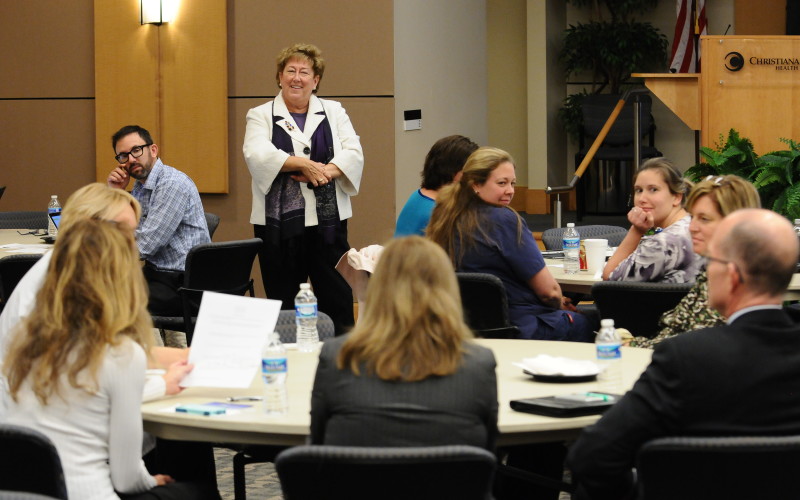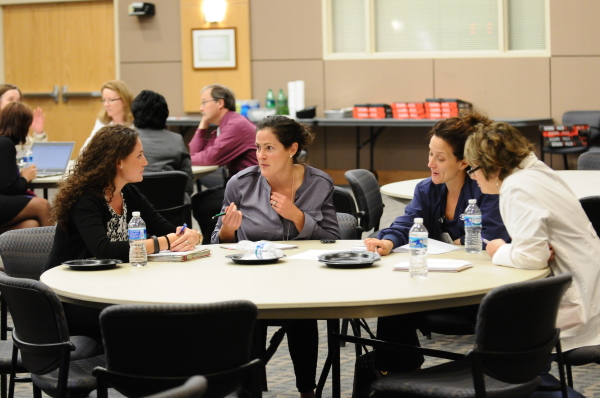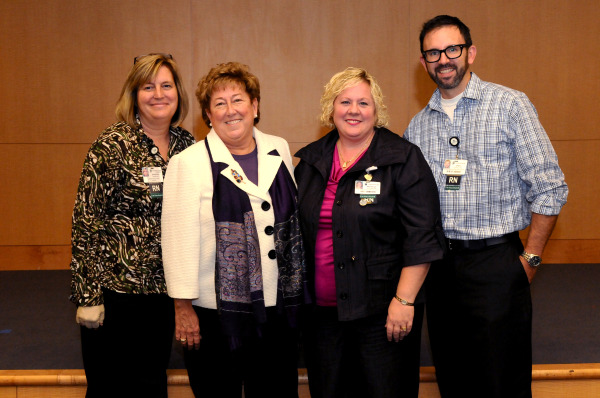GetWellNetwork CNO highlights importance of health literacy in delivering high-quality care

At an Oct. 20 event marking Health Literacy Month at Christiana Care, Karen Drenkard, Ph.D., RN, NEA-BC, FAAN, chief clinical/nursing officer for GetWellNetwork and former executive director of the American Nurses Credentialing Center, explained that effective communication between clinician and patient is essential to providing quality health care.
Communication between a clinician and patient should be a two-way street. But if the patient doesn’t understand the instructions or can’t read the words on a pill bottle, the best care will not be assured.
A patient’s level of health literacy, defined as the “capacity to obtain, process and understand basic health information needed to make appropriate health decisions and services needed to prevent or treat illness,’’ is not always apparent, Drenkard said. Those whose reading skill is limited or who are overwhelmed by medical terminology might not let the clinician know how little information is being understood.

“As clinicians, we have conditioned people to be passive recipients of their care,’’ she said. To ensure we provide the best care, “We’re going to have to shift our focus and have a new emphasis on engaging people in their care.’’
Effective communication is “about mutual understanding, the concept of exchanging information on a partnership level, rather than a hierarchical way,’’ she said.
Some 90 million Americans, nearly half the adult population, have inadequate health literacy, according to the Institute of Medicine. Low health literacy is more prevalent in older people and those with less education and lower socioeconomic status, but it is found among all ages, races, incomes and education levels. The stress inspired by news of a serious diagnosis or concern about a family member can cause even highly educated people to block out the words of a clinician, Drenkard said.
Michelle Collins, MSN, RN-BC, ACNS-BC, director of Nursing Development and Education and the leader for the Learning Institute’s Center for Patient and Family Education, who introduced Drenkard, said Christiana Care wants to strengthen the work already being done to help families across the continuum of health care. That means making sure all written and verbal materials are understandable to everyone who encounters them.
“High intellect, high reading level, do not always translate to better understanding one’s health care,’’ Collins said. “We may take it for granted because we are so familiar with it, but for our patients and community members, it’s not that familiar.’’
Researchers at the O’Neil Center, a research center in Bethesda, Md., created by the GetWellNetwork, are working to create a tool to help clinicians assess the ability of a patient and family to engage in care, to improve the exchange of information and to facilitate collaboration with the patient to tailor interventions according to the patient’s capacity and choices.
Patients want three things, Drenkard said: “They want to be known as an individual. They want mutually determined goals, and they want help sorting through all the information they’re given.’’

After an extensive literature review, O’Neil researchers found only 31 evidence-based studies during a 10-year period that reported on effective ways to overcome low health literacy and to assess a patient’s willingness to engage in his or her own health care.
To address that information gap, they are working to develop an interactive model of care that would create an index or score that could be used to guide further patient and family education. Though still in early development, the plan is to test models in randomized clinical trials to see what works, she said.
“Superheroes have tools,’’ Drenkard said. “So do we. Some of the tools we’re using are across the entire care continuum.’’ The goal is to benefit patients by assuring they have the information they need, presented in a way they can understand.
At Christiana Care, strategies to address health literacy are supported by the Patient and Family Education Policy, which was revised in 2012 to set a health literacy standard of 6th grade reading level, 50 percent or greater ease of reading, for patient and family educational materials.
“We use software specifically designed for health literacy to aid us in editing the patient education materials that we create,” Collins said. “In addition, we have hosted focus groups with patients and staff to learn how they obtain their information, how often they replace it, and how it is assessed for health literacy. And we continually work with our clinicians to help them to improve their use of plain language and to define complex terminology when communicating with patients.”